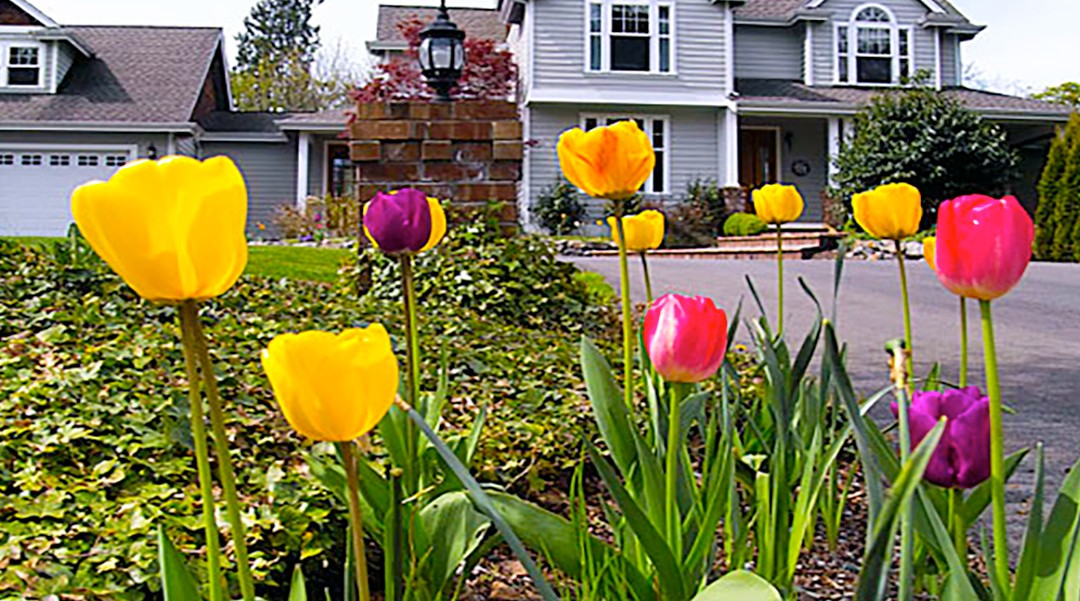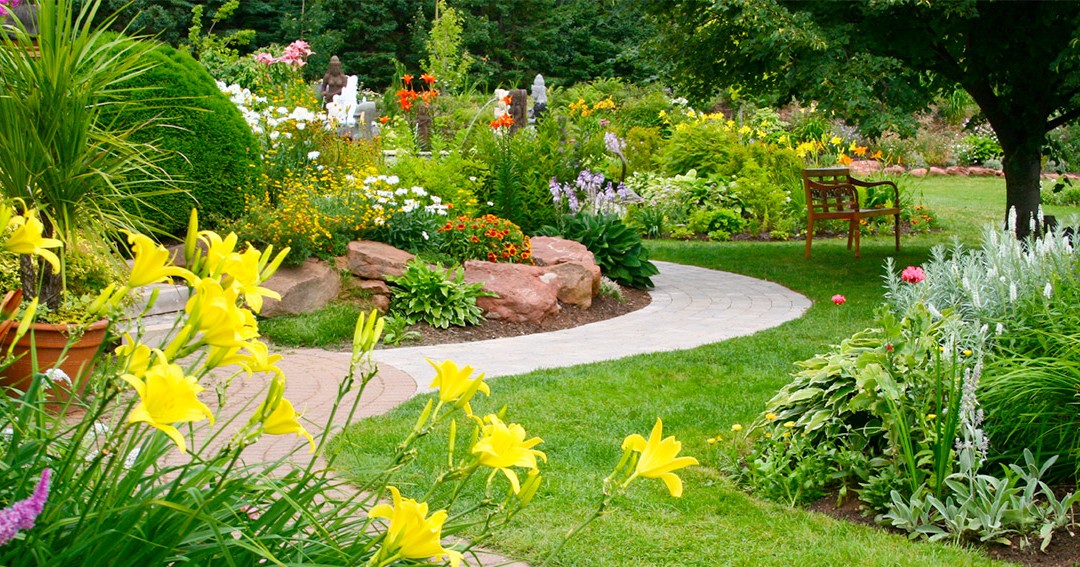
Aug 4, 2017 | Real Estate News
When Scott Wickberg proposed to Amy in 2015, they knew they wanted a memorable wedding—but they also knew that they wanted to buy a house. Faced with the high prices of homes and wedding venues in Denver, where they lived, the couple decided to get creative and kill two birds with one stone. How? By buying a home where they’d also host their own wedding.
“At some point Scott or I said that we should just buy a house with a big backyard and get married there,” says Amy. “The more we thought about it, the more it made sense.”
Wedding or a home: Why choose?
The Wickbergs are hardly alone: Backyard weddings are all the rage right now, increasing across the country. While many walk down the aisle in their parents’ or other family member’s backyard, some, like the Wickbergs, prefer to host the event in a home they’ve recently purchased, rolling a housewarming party and wedding into one.
The driving force behind this choice is financial: Scott, a web designer, and Amy, an opera singer, weren’t swimming in cash. According to TheKnot.com, the average wedding costs $31,213, about half of which goes to renting the reception venue. Meanwhile, the recommended 20% down payment on a median $240,900 house amounts to a whopping $48,180. So, unless you have a mountain of money lying around, it makes sense to pool these expenses into one place.
“We’re definitely seeing an increase in couples trying to make the most from their limited wedding budgets,” says Ariel Meadow Stallings, the publisher behind the wedding website Offbeat Bride. “Venue rentals can be a huge part of a wedding budget, so by bundling that cost into a real estate purchase, couples can turn a wedding expense into a longer-term real estate investment.”
Not only was buying the home a good investment, it also meant that the Wickberg wedding gave their guests a taste of their everyday life. On the day of the wedding, Amy and her bridesmaids got ready right next door thanks to a friendly neighbor. And when the festivities wound down at 10 p.m. in consideration of the families living nearby, the happy couple and their guests walked to a brewery just a few blocks away to continue their celebration.
The experience proved to be a rewarding one—not just in a financial sense but on an emotional level, too.
“Even if we had all the money in the world, we wouldn’t have done our wedding any other way,” says Amy. “We loved having our wedding at home. It felt like us.”

Mar 28, 2016 | Real Estate News
If you’re looking to sell your home during prime house-shopping season this spring, you’d better get cracking now. After all, it’s not as easy as slapping an ad on Craigslist; if you want your humble abode to stand out from the competition, that could take months to do right.
That’s why we’re kicking off our 2016 Home-Selling Guide—a series of articles in which, each week, we’ll show you the next step to prep your house for sale and ace the deal. (In case you’re also on the hunt for a new home, we kicked off our Home-Buying Guide yesterday.)
Step 1 to selling a home is a New Year’s classic: Whip your place into shape by fixing any problems and upgrading the eyesores. Because like it or not, your home has sustained some wear and tear over the years. Here’s how to assess the damage and find out which renovations will pay off down the road.
1. Tally the age of various items
No matter how great your home looks at first glance, any savvy buyer will point to various parts and pop the question: How old? And since guesstimates won’t cut it, it’s time to gather some paperwork. If you’ve purchased your home in the past few years, check your home records or seller’s disclosure for the age or last repair of big items (namely your roof, HVAC system, water heater, and gutters), or dig up copies of your own maintenance records or receipts.
How long items last depends on a lot of factors such as the model and how well it’s been maintained, but you can get a general idea of average life span from the National Association of Home Builders. For example:
- Wood shingle and shake roof: 15 to 30 years
- Central air-conditioning unit: 15 years
- Electric water heater: 14 years
- Gutters: 30 years
2. Do your own walk-through
Channel Sherlock Holmes and go through your home, room by room. Look for signs of damage that might drag down its value. Chandler Crouch, broker for Chandler Crouch Realtors in Forth Worth, TX, suggests looking for these common problem spots:
Wood rot around outside door frames, window ledges, and garage doors. Condensation and rain can cause these areas to weaken and rot.
Water stains on the ceiling or near doors and windows. This can indicate a leaky roof or rain seeping in from outside.
Leaks under sinks or around toilets.
Bulges under carpet or discoloration on hardwood floors, which can indicate flooding problems or an uneven foundation.
Next, test what’s called the “functionality” in every room. For example, “Cracks visible in the walls and floor, doors that don’t shut right, broken handles on cabinetry, basically anything that doesn’t work perfectly should be repaired,” Crouch says. And don’t forget to inspect the outside.
“A lot of sellers skip the outside, but it is so important. That is where buyers will make their first impression,” says Darbi McGlone, a Realtor® with Jim Talbot Real Estate in Baton Rouge, LA.
3. Bring in the pros
Once you’ve done your own walk-through, you may want to have a pro take a second look. These people can spot flaws you overlooked, because either you’re used to them or you didn’t realize they could cause trouble. You can enlist a Realtor or hire a home inspector to do an inspection (or pre-inspection) to pinpoint problems from bad wiring to outdated plumbing.
While the cost varies, people pay an average of $473 for a home inspection, according to Angie’s List. Go to the National Association of Home Inspectors to find an inspector in your area. It may cost a bit, but it will buy you the peace of mind of knowing you’re not in for any surprises down the road. In fact, having a home inspection report handy to show buyers can inspire confidence that they (and you by association) aren’t in for any nasty surprises as you move toward a deal.
4. Decide what needs renovating
Once you know what in your house could stand for repairs or upgrades, it’s time to decide where to infuse some cash. Don’t worry, not everything needs to be done before your home’s on the market. And while you’re probably not jumping at the idea of renovating a property you’re going to sell, certain fixes will give you an edge over the competition, which means more/better offers. Remember, real estate is an investment!
Please, Mr. Postman
Send me news, tips, and promos from realtor.com® and Move.
But don’t just obsess over the obvious—e.g., your kitchen could stand for new cabinets. After all, many buyers will want to tweak cosmetic details to their own tastes, so you could be throwing money down the drain. Instead, focus on fix-its that are less susceptible to personal preferences that buyers like to know are in good shape.
For example, a recent study by the National Association of Realtors® found that upgrading hardwood floors reaps an estimated 100% return on investment, essentially paying for itself. Upgrading your insulation can net you a 95% ROI, a new roof a whopping 105%! Because what buyers don’t like to know they’ve got a solid roof over their heads?
Once you’ve got the ball rolling on getting your place in shape, you’ll be ready for the next step—stay tuned next week for more details on what to do!

Feb 13, 2016 | Real Estate News
Your front yard is the red carpet inviting buyers into the beauty that is your home. If it’s rugged, messy and unkempt, buyers will take one look and then keep on driving to the next property on their list. Don’t let that happen by making your front yard luscious and as amazing as the inside of your home.
What areas should you focus on in your front yard? Where do you start? To help you break down the revitalization of your front yard, here are the steps you should take:
1. Cut the grass.
Buyers don’t want to trudge through high grass as though they were in the Amazon or on a safari in Africa. This means the lawn mower needs to be out at least once a week if not every other week, keeping it trimmed and maintained. It also needs to be green so it looks alive and lush. Water so the sun doesn’t dry out the lawn and turn it yellow or brown. A professional landscaper can help maintain a balance of trimming and growth so it looks just right for buyers.
2. Plant more shade trees.
One or two trees in the front yard are all right, but if you want to really add some shade, plant more. Shade trees will detract from the glare of the sun, and it can help decrease the temperature of the house if they’re placed close to windows. It also will help keep the lawn green with moisture. You can plant trees that are shorter and will grow by the time the new owner buys the home, but be sure they’re strong and can handle the climate.
3. Install outdoor lighting.
Outdoor lighting is a good way to both illuminate the house at night and accent parts of your yard. Depending on where you install the lights, your house will look very appealing at night to those buyers who might not have time to do their shopping during the day. Outdoor lighting also helps to illuminate a path like a sidewalk to get from the curb to your front door for easier navigation. It helps to accent the beauty of your landscaping which all together increases the beauty of your home.
4. Consider adding flowers for more color.
If your front yard has a lot of greenery, you should increase the yard appeal by adding more colors. Flowers are a great and simple way to do this, as well as shrubbery with different blooms. Perennials are the best for this because they last for more than a year, which means less maintenance for the seller and the new homeowner. They come in a wide variety of colors and types so the yard can be decorated with any number of them while still requiring less maintenance.
5. Keep everything clean!
In addition to keeping the lawn trimmed, everything else should be clean. Anywhere that can build up dirt or grime – siding, porch, front door, driveway – should be cleaned on a regular basis. Buyers don’t want to see a lot of dirt and mess, and it will detract from them wanting to walk into the house. So take a broom, a power washer and a few hours on the weekend to keep everything sparkling clean. Don’t have a power washer? A professional power washing service can cost as little as $293.
<Read More>

Feb 13, 2016 | Real Estate News
The size of new homes rose last year, suggesting Americans’ love of space remains strong but making new homes less affordable for a bigger swath of buyers.
The average size climbed to about 2,720 square feet in 2015 from about 2,660 square feet the previous year, according to data released by the National Association of Home Builders at its annual trade show.
Almost half of the homes started last year had four or more bedrooms, and one out of four had garages with room for three or more cars.
That isn’t necessarily a sign of strength in the housing market, however.
Home sizes have grown lately because new construction has been tilted toward the high end. Builders do aim to draw young buyers in at lower price points, so that there is a market for some of their more expensive products over the long term. But they haven’t made more starter homes in recent years mainly because of land prices, construction costs and lack of available mortgages for less-affluent buyers.
<Read More>




